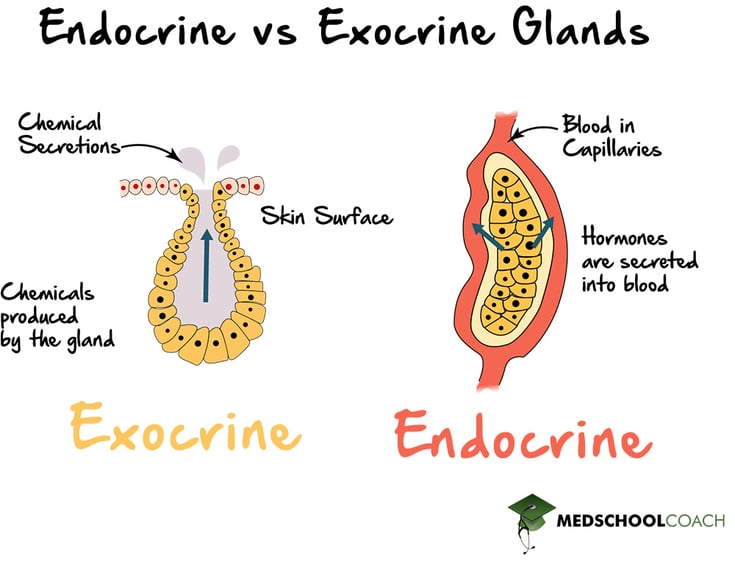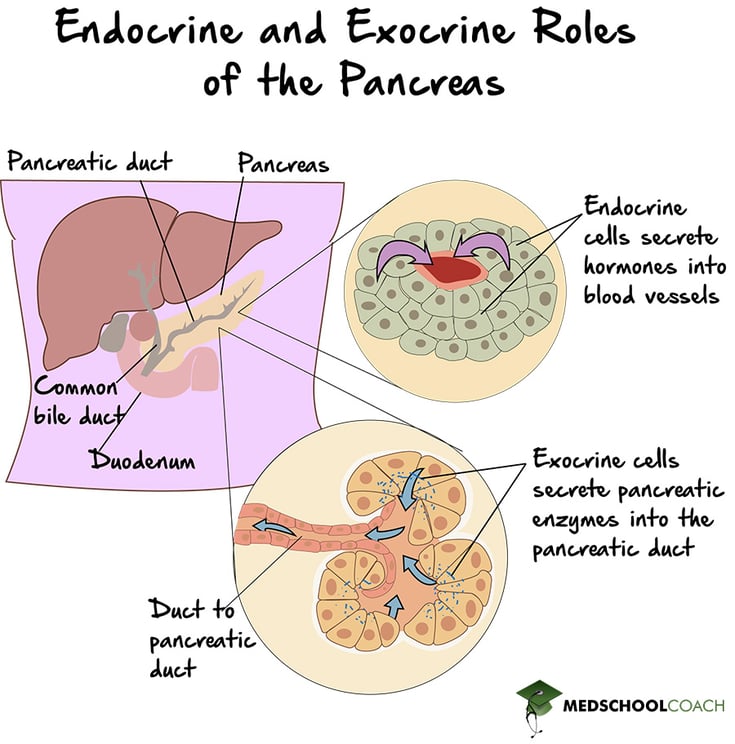Sample MCAT Question - Endocrine vs. Exocrine Glands
Which of the following is an example of an endocrine gland?
a) Prostate gland
b) Salivary glands
c) Mammary glands
d) Thyroid gland
Get 1-on-1 MCAT Tutoring From a Specialist
With MCAT tutoring from MedSchoolCoach, we are committed to help you prepare, excel, and optimize your ideal score on the MCAT exam.
For each student we work with, we learn about their learning style, content knowledge, and goals. We match them with the most suitable tutor and conduct online sessions that make them feel as if they are in the classroom. Each session is recorded, plus with access to whiteboard notes. We focus on high-yield topics if you're pressed for time. If you have more time or high-score goals, we meticulously cover the entire MCAT syllabus.
What Are Glands?
In simple terms, glands are organs that synthesize substances for release. There are two different types of glands – endocrine glands and exocrine glands. The main distinction between the two types of glands is where they secrete their substances. Endocrine glands secrete their substances into the bloodstream, while exocrine glands release substances onto epithelial surfaces (Figure 1).

Examples of Endocrine Glands
There are various endocrine glands throughout the body that secrete different types of hormones into the bloodstream. For example, the pancreas is an endocrine gland that secretes insulin and glucagon into the bloodstream to help regulate blood glucose concentrations. The thyroid gland releases thyroid hormone, which regulates basal metabolic rate. Similarly, the parathyroid glands secrete parathyroid hormone, which helps regulate blood calcium concentrations. The hypothalamus and pituitary gland secrete a variety of different hormones important for physiology, while the ovaries and testes secrete hormones important for reproductive processes.
Examples of Exocrine Glands
Exocrine glands secrete substances onto epithelial surfaces. One example of an epithelial surface is the skin. The sweat glands and sebaceous glands secrete sweat and oil onto the surface of the skin, respectively. Also, the mammary glands secrete milk, which is released onto the skin surface. Epithelial surfaces can also include surfaces within the body. One example is the gastrointestinal tract. Although the pancreas is an endocrine gland, it also has exocrine functions as well (Figure 2). It secretes digestive enzymes onto the surface of the gastrointestinal tract. The gastric glands secrete acid, pepsinogen, and mucus onto the stomach and other components of the gastrointestinal tract. Furthermore, the salivary glands secrete saliva into the mouth, which is also part of the gastrointestinal tract. Another gland, the prostate gland, secretes a component of semen that passes through the urinary tract in males.

Explore More
MCAT Masterclass Chapters
Take a closer look at our entire MCAT Masterclass or explore our lessons below.
-
Hypothalamus and Pituitary Gland
View Subject -
Digestive System Anatomy & Function
View Subject -
Types of Hormones
View Subject -
Nervous System Structure & Function - MCAT Biology
View Subject -
Urine Formation
View Subject -
Protein Folding and the Hydrophobic Effect - MCAT Biochem
View Subject




